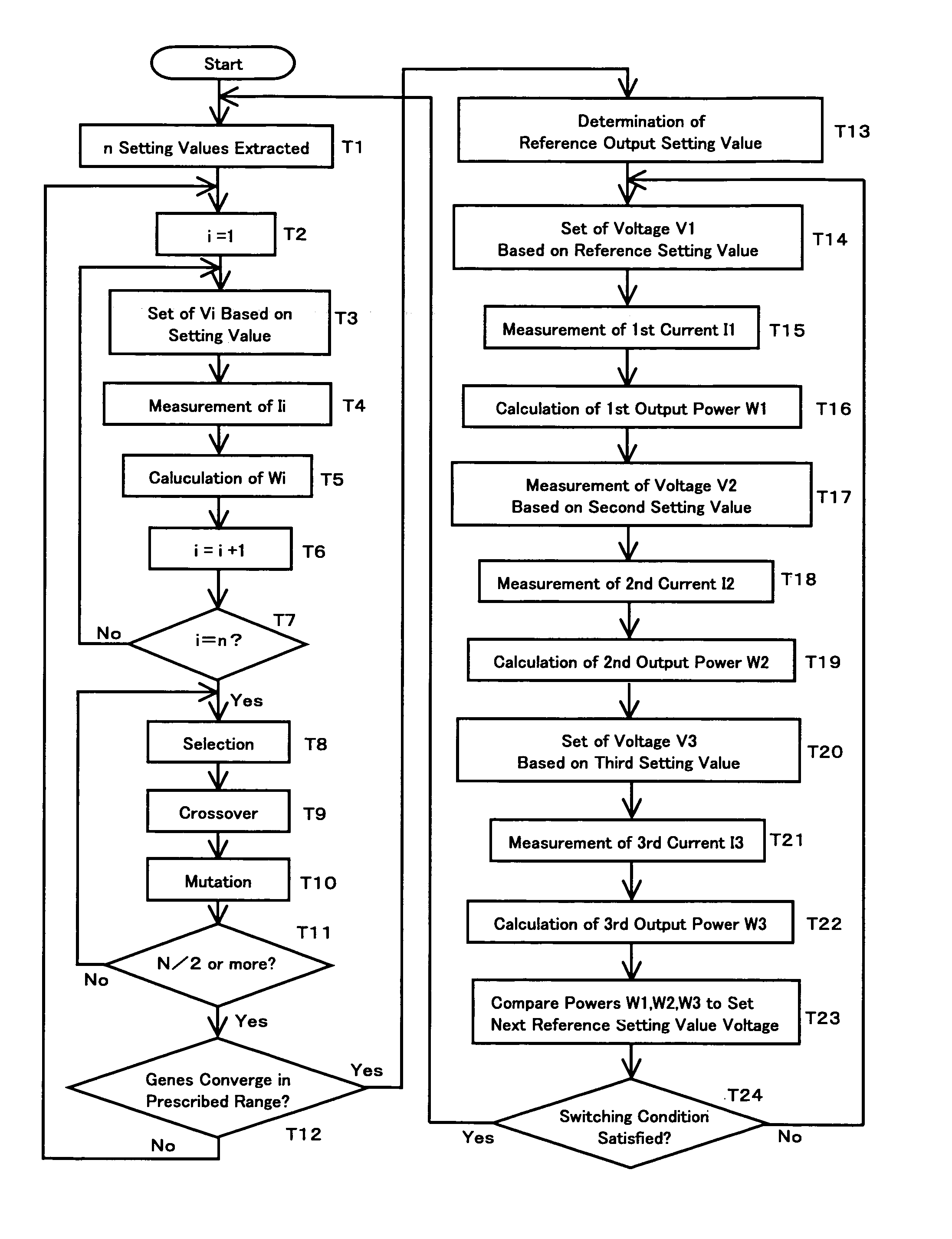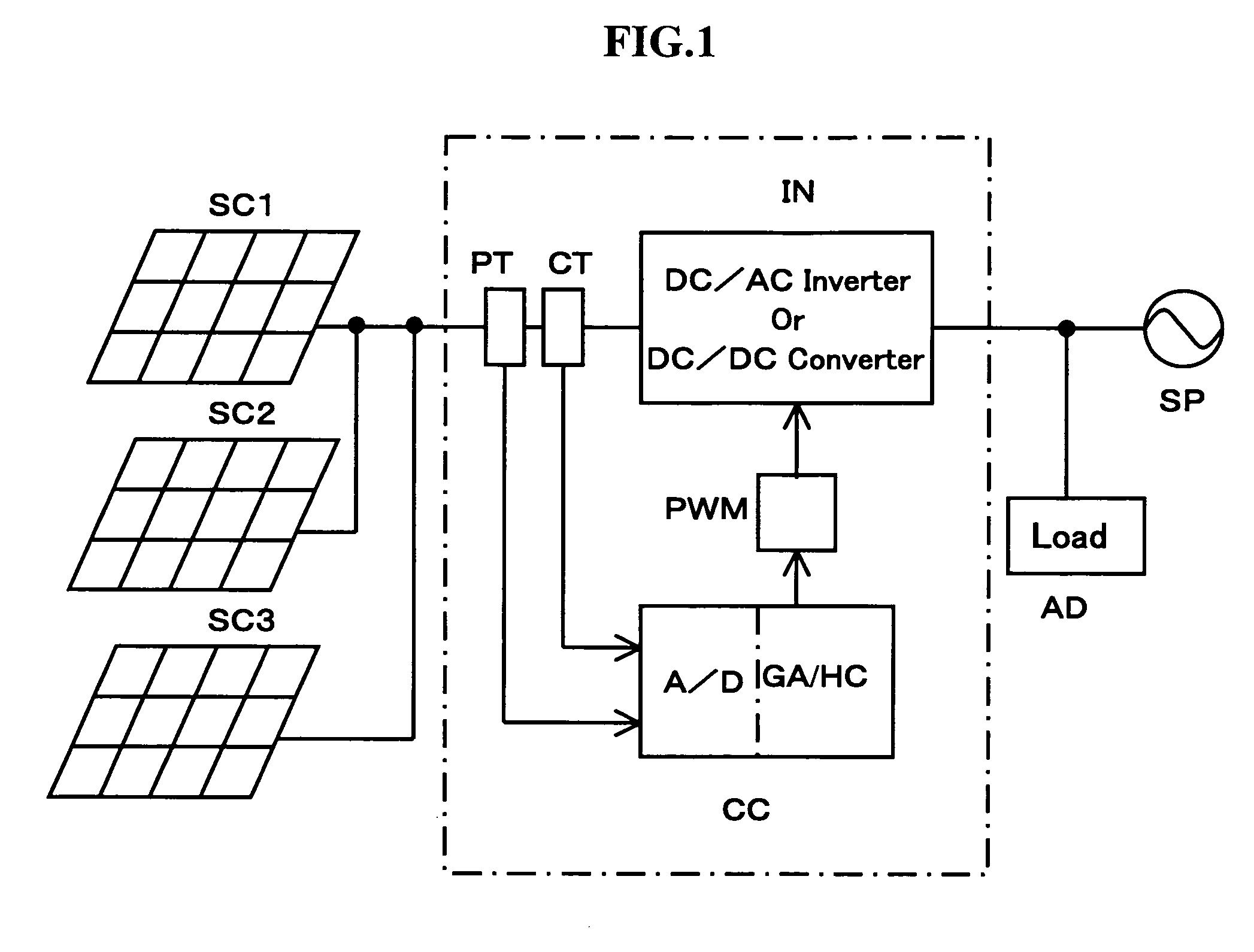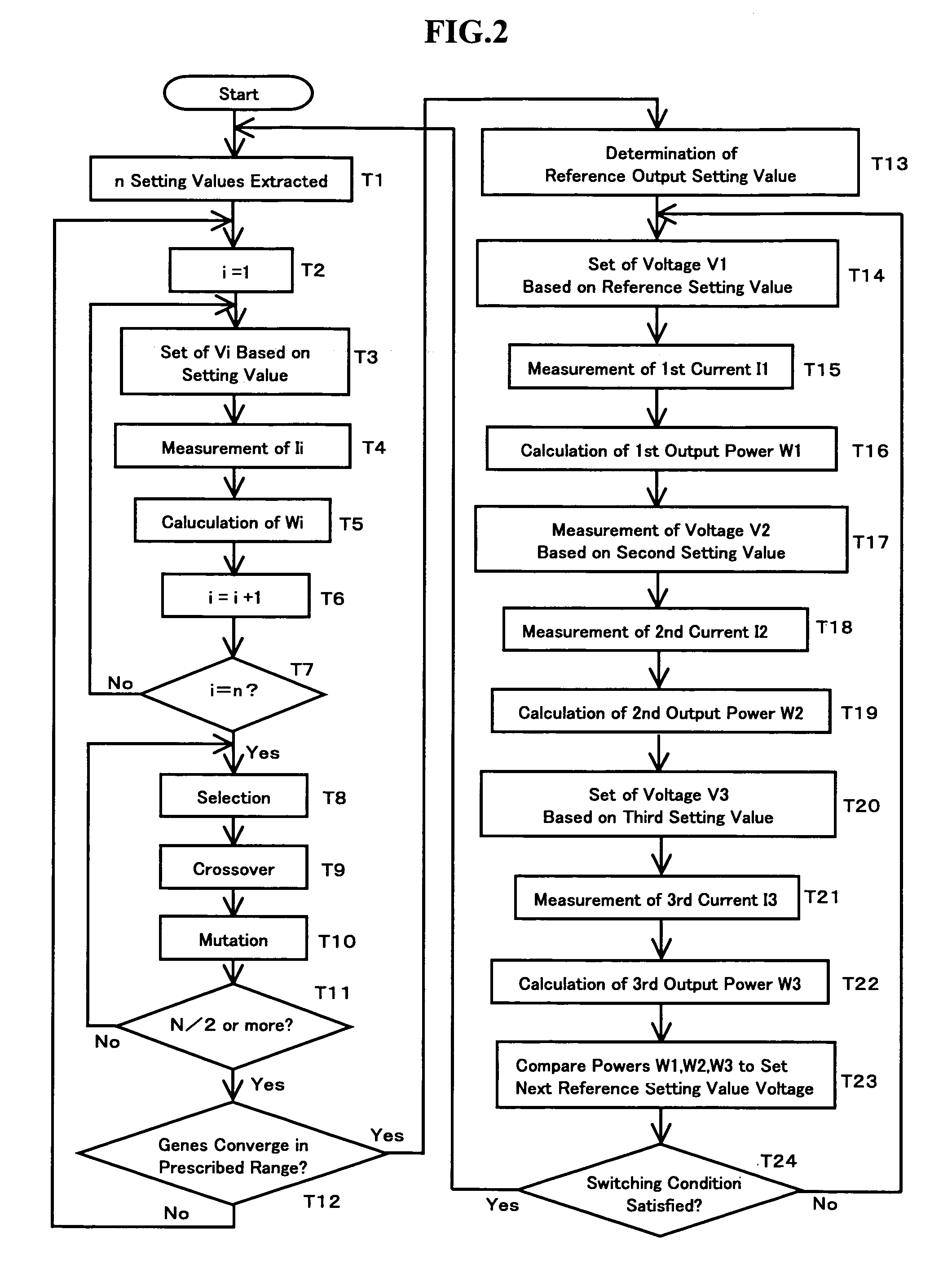Method of controlling photovoltaic power generation system
a power generation system and photovoltaic technology, applied in the field can solve the problems of power generation system not operating in the maximum power mode, disadvantage of the conventional hill climbing method, etc., and achieve the effect of improving the converging speed of genes, increasing the overall working efficiency of photovoltaic power generation systems, and high evaluation valu
- Summary
- Abstract
- Description
- Claims
- Application Information
AI Technical Summary
Benefits of technology
Problems solved by technology
Method used
Image
Examples
second embodiment
[0063]A second embodiment of the present invention is different from the above-described first embodiment in that an additional hill climbing is performed before the genetic algorithm control. In the additional hill climbing process, a predetermined photovoltaic output setting value is utilized as the initial reference photovoltaic output setting value. Referring to FIG. 2, according to the second embodiment, an additional hill climbing (T13–T24) is performed before the genetic algorithm control T1–T12.
[0064]In general, a photovoltaic power generation system normally starts the operation when the sun rises in the morning. When the solar cell panel is installed at a location where there is no likelihood that a shadow is cast on any part of the solar cell panel, the method according to the second embodiment, wherein the hill climbing process is first performed, ensures a quicker arriving at the maximum output power point. Then, when the photovoltaic voltage-power characteristic is var...
third embodiment
[0065]A third embodiment of the present invention is basically the same as or similar to the first or second embodiment described above, except that the switching condition for the hill climbing is specified. Specifically, according to the third embodiment, the hill climbing is changed to the genetic algorithm process when the hill climbing process has been performed for a predetermined duration of time. When the hill climbing process has been performed for a predetermined time, the solar irradiation may have changed, thereby causing a variation in the photovoltaic voltage-power characteristic and a shift of the maximum output power point. According to the third embodiment, the operation is switched to the genetic algorithm process after the predetermined time has lapsed. This allows timely searching for a point closest to the maximum maximal value among a plurality of maximal values, thereby properly tracking the maximum output power point.
fourth embodiment
[0066]According to a fourth embodiment of the present invention, the switching condition is satisfied when the output power of the solar cells fluctuates by more than a predetermined value with respect to the output power of the preceding step. In the fourth embodiment, a variation in the photovoltaic voltage-power characteristic caused by a change in the solar irradiation is detected through the variation in the output power by more than the predetermined value, so as to switch the operation to the genetic algorithm process. This allows timely searching for a point closest to the maximum maximal value among a plurality of maximal values, thereby properly tracking the maximum output power point.
PUM
| Property | Measurement | Unit |
|---|---|---|
| photovoltaic voltage-power characteristic | aaaaa | aaaaa |
| power | aaaaa | aaaaa |
| output power | aaaaa | aaaaa |
Abstract
Description
Claims
Application Information
 Login to View More
Login to View More - R&D
- Intellectual Property
- Life Sciences
- Materials
- Tech Scout
- Unparalleled Data Quality
- Higher Quality Content
- 60% Fewer Hallucinations
Browse by: Latest US Patents, China's latest patents, Technical Efficacy Thesaurus, Application Domain, Technology Topic, Popular Technical Reports.
© 2025 PatSnap. All rights reserved.Legal|Privacy policy|Modern Slavery Act Transparency Statement|Sitemap|About US| Contact US: help@patsnap.com



